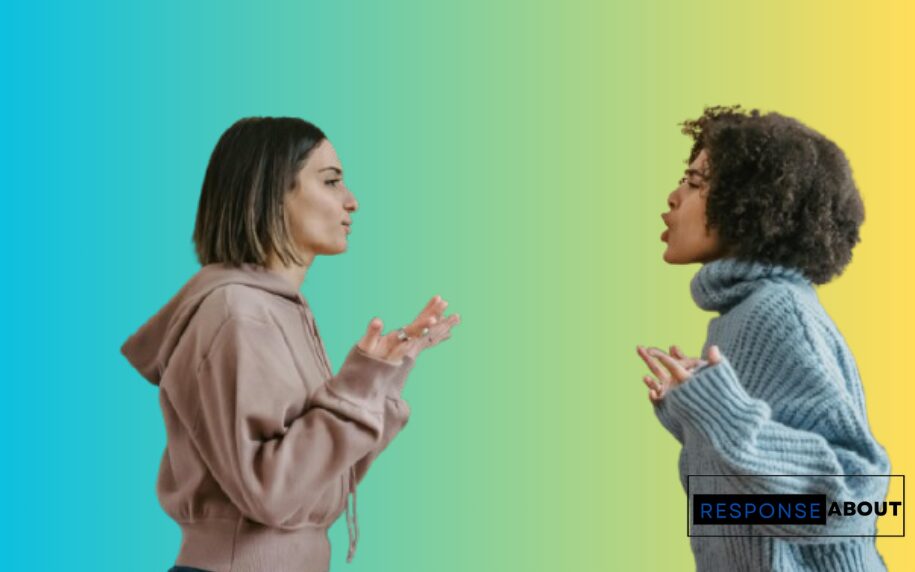Last year, I argued with my best friend, which spiraled out of control. What started as a small misunderstanding escalated into hurtful words that left a painful rift between us. When I finally realized how much damage had been done, I struggled to find the right words to apologize. A simple “sorry” felt inadequate for the hurt I had caused someone who meant so much to me.
Have you ever found yourself in a similar situation? Best friendships are among our most precious relationships, but they’re not immune to conflicts, misunderstandings, and moments when we let each other down. When you’ve hurt your best friend, finding the right way to apologize isn’t just about apologizing— acknowledging their feelings, taking responsibility, and showing how much you value the friendship.
In this article, I’ve compiled 35 heartfelt ways to apologize to your best friend, from meaningful messages to thoughtful actions demonstrating your sincere remorse and commitment to rebuilding your bond.
Jump to section
- Sincere Text and Message Apologies
- In-Person Apology Approaches
- Thoughtful Apology Gestures
- Making Amends Through Actions
- Rebuilding Trust After an Apology
- What Not to Say When Apologizing
- Final Take
- FAQs About Apologizing to Friends
Sincere Text and Message Apologies
When you can’t apologize in person right away, these thoughtful message approaches can help begin the healing process.
#1. I was completely wrong and I’m truly sorry. Your feelings are valid, and I should have been more considerate
This direct apology takes full responsibility without excuses. According to Dr. Harriet Lerner, author of “Why Won’t You Apologize?”, effective apologies avoid qualifiers like “if,” “but,” or “maybe” and instead clearly acknowledge wrongdoing.
#2. I’ve been reflecting on my behavior, and I realize how hurtful my words/actions were. You deserve so much better from me
This thoughtful message shows you’ve taken time to reflect rather than rushing to apologize without understanding. It demonstrates growth and self-awareness while validating their experience.
#3. There’s no excuse for how I acted. I value our friendship more than my pride, and I hope you can forgive me
This apology prioritizes the relationship over being right. Research from Ohio State University shows that apologies that demonstrate vulnerability and humility are more likely to be received positively.
#4. I miss you and our friendship. I take full responsibility for my mistake and want to make things right if you’re open to it
This forward-looking message acknowledges the mistake while expressing hope for reconciliation. It respects their agency in deciding whether to accept your apology while making your intentions clear.
#5. What I said/did was completely out of line. I understand if you need space, but I want you to know how deeply sorry I am
This message respects their potential need for distance while clearly conveying remorse. It shows emotional intelligence by recognizing they might not be ready to reconcile immediately.
#6. I know “sorry” isn’t enough, but it’s where I need to start. I was thoughtless and wrong, and I regret hurting you
This humble message acknowledges the limitations of words while still taking the necessary first step. It shows awareness that rebuilding trust may require more than just an apology.
#7. No friendship means more to me than ours. I hate that I caused you pain, and I’m truly sorry for breaking your trust
This apology emphasizes the value of the relationship and directly acknowledges the emotional impact of your actions. According to friendship researcher Dr. Irene Levine, acknowledging the specific hurt caused strengthens the sincerity of an apology.
💡 Pro tip: When apologizing via text, keep your message focused and sincere. Avoid lengthy explanations that might come across as excuses. If your friend responds, follow their lead on whether to continue the conversation digitally or suggest talking in person.
In-Person Apology Approaches
Face-to-face apologies allow for a more authentic connection. These approaches can help navigate these important conversations.
#8. “I’ve been wanting to talk to you because I need to apologize. What I did was wrong, and I’m truly sorry.”
This straightforward opening clearly states your intention. Beginning with your purpose prevents your friend from wondering where the conversation is heading and demonstrates that you’re taking initiative to address the issue.
#9. “I’ve missed having you in my life, and I take full responsibility for damaging our friendship. I’m here to listen to how my actions affected you”
This approach centers their experience and creates space for them to express their feelings. According to conflict resolution expert Dr. Tammy Lenski, effective apologies include listening fully to the hurt party’s experience without interruption or defense.
#10. “I’ve been reflecting on what happened, and I realize I completely mishandled the situation. Can I share what I’ve learned and how I plan to do better?”
This growth-oriented approach shows reflection and a commitment to change. It demonstrates that you’ve thought deeply about the situation rather than offering a quick apology to move past the discomfort.
#11. “Our friendship means everything to me. I was completely wrong, and I’m committed to rebuilding your trust”
This concise approach emphasizes the relationship’s importance while taking clear responsibility. It acknowledges that trust may need to be rebuilt while expressing your commitment to that process.
#12. “I know words aren’t enough, but I want to start by telling you how sorry I am. I also want to ask what you need from me to make this right”
This empowering approach gives your friend a voice in the reconciliation process. According to research in the Journal of Social and Personal Relationships, apologies that include an offer to make amends are more effective than those that don’t.
#13. “I’ve been avoiding this conversation because I’m ashamed of how I acted, but I can’t keep putting it off. You deserve a sincere apology”
This honest approach acknowledges any delay in apologizing. It shows emotional maturity by admitting to difficult feelings while prioritizing your friend’s need for acknowledgment over your own comfort.
#14. “I value your friendship too much to let my mistake come between us. I was wrong, and I’m truly sorry”
This relationship-focused approach clearly states both your remorse and the importance of the friendship. It’s direct and heartfelt without overwhelming the conversation with excessive explanations.
Thoughtful Apology Gestures
Sometimes actions can support your words. These thoughtful gestures can help demonstrate the sincerity of your apology.
#15. Write a handwritten letter expressing your apology and what the friendship means to you
This personal approach takes time and effort, showing that your apology is not casually given. According to psychologist Dr. Guy Winch, handwritten apologies often carry more emotional weight than digital messages because they require more investment.
#16. Create a small photo album or digital slideshow of your friendship memories
This nostalgic gesture reminds both of you of the relationship’s value and history. It demonstrates that you cherish the good times you’ve shared and hope to create more positive memories together.
#17. Prepare their favorite meal or order from their favorite restaurant
This thoughtful gesture shows attention to their preferences and creates an opportunity for conversation. Sharing food has long been recognized as a way to rebuild connection across many cultures.
#18. Give them a small, meaningful gift that references a shared joke or memory
This personalized approach shows that you value the unique aspects of your friendship. Choose something that holds significance rather than an expensive item that might seem like you’re trying to “buy” forgiveness.
#19. Make a playlist of songs that remind you of your friendship or that express how you feel
This creative approach uses music to convey emotions that might be difficult to put into words. It can be particularly meaningful for friends who share a love of music or who have attended concerts together.
#20. Send flowers with a sincere note (if appropriate for your friendship dynamic)
This traditional gesture can work well for some friendships, though consider whether it fits your relationship style. If you go this route, include a personal note rather than relying on the gesture alone.
#21. Create a “friendship coupon book” with promises like “A day where we do only your favorite things” or “I’ll watch that movie you love but I always avoid”
This forward-looking approach focuses on positive experiences to come. It shows commitment to the friendship’s future through specific, actionable promises.
Making Amends Through Actions
Real apologies extend beyond words. These action-based approaches demonstrate your commitment to change.
#22. Offer to make direct amends for any practical problems you caused
This responsible approach addresses tangible consequences of your actions. Whether replacing something damaged or rectifying a situation you created, concrete amends show your apology isn’t just talk.
#23. Share the specific steps you’re taking to ensure the same mistake won’t happen again
This accountability-focused approach shows you’re serious about change. According to relationship researcher Dr. John Gottman, explaining your plan for behavioral change significantly increases the effectiveness of apologies.
#24. Ask them to call you out if they see you repeating problematic patterns
This vulnerable approach invites ongoing feedback. It demonstrates humility and a genuine desire to grow from the experience rather than simply moving past it.
#25. Suggest a regular check-in about your friendship’s health going forward
This preventative approach focuses on strengthening communication. It shows commitment to maintaining the friendship’s well-being rather than waiting for problems to develop.
#26. Be consistently reliable in small ways to rebuild trust gradually
This patient approach recognizes that trust returns through consistent actions over time. According to trust researcher Dr. Brené Brown, reliability—doing what you say you’ll do—is a cornerstone of rebuilding broken trust.
#27. Respect their need for space if they request it
This respectful approach honors their boundaries during reconciliation. It demonstrates that your apology is genuinely about their well-being rather than your desire for immediate forgiveness.
#28. Listen without defensiveness when they express how your actions affected them
This empathetic approach centers their experience rather than your intentions. Research from Harvard Business Review shows that non-defensive listening is one of the most important components of an effective apology.
Rebuilding Trust After an Apology
After the initial apology, these approaches can help strengthen your friendship moving forward.
#29. Check in about the issue rather than pretending it never happened
This honest approach prevents lingering resentment. It shows you’re willing to engage with difficult conversations rather than sweeping problems under the rug.
#30. Express gratitude when they give you another chance
This appreciative approach acknowledges that forgiveness is a gift, not an obligation. It shows you don’t take their forgiveness for granted and recognize the emotional work involved in rebuilding trust.
#31. Be patient if full reconciliation takes time
This understanding approach respects their emotional process. According to psychologist Dr. Janis Abrahms Spring, author of “How Can I Forgive You?”, genuine forgiveness often unfolds gradually rather than in a single moment.
#32. Follow through on any promises made during your apology
This integrity-based approach demonstrates that your words have meaning. Consistency between words and actions is essential for rebuilding broken trust.
#33. Suggest activities that have strengthened your bond in the past
This connection-focused approach invests in rebuilding positive shared experiences. Research shows that creating new positive memories can help heal relationship wounds.
#34. Acknowledge progress in rebuilding your friendship
This encouraging approach celebrates positive steps forward. Recognizing improvements helps motivate continued investment in the relationship from both sides.
#35. Demonstrate changed behavior consistently over time
This sustained approach recognizes that true apologies are lived, not just spoken. According to relationship expert Dr. Harriet Lerner, “More than anything, the hurt party wants to know that you ‘get it’ and that you won’t do it again.”
💡 Pro tip: Pay attention to your friend’s communication style when apologizing. Some people appreciate direct conversations, while others process emotions through activities done side by side. Tailor your approach to what would make them most comfortable.
What Not to Say When Apologizing
Understanding what to avoid is just as important as knowing what to say. These approaches can undermine even the most well-intentioned apology:
Avoid using “if” statements like “I’m sorry if you were hurt.” This conditional language suggests their hurt is optional or questionable, rather than a real consequence of your actions.
Don’t say “I’m sorry you feel that way,” which focuses on their reaction rather than your behavior. This phrasing can come across as dismissive or suggest they’re overreacting.
Avoid explaining your intentions at length. While context matters, focusing too much on why you did something can sound like you’re making excuses or justifying hurtful behavior.
Never pressure them for immediate forgiveness with statements like “Can we just move past this now?” Forgiveness is their choice to make on their own timeline.
Don’t compare their response to how you would react in their position. Statements like “I wouldn’t make such a big deal about this” invalidate their feelings and unique perspective.
Final Take
Apologizing to your best friend requires courage, humility, and a genuine commitment to healing the relationship. The most effective apologies combine sincere words with meaningful actions that demonstrate your remorse and your commitment to change.
Remember that the goal of an apology isn’t simply to ease your own guilt or quickly return to normal—it’s to acknowledge your friend’s hurt, take responsibility for your actions, and rebuild the trust that makes your friendship special. This process may take time, and that’s okay.
Your best friendship is worth the emotional investment that a proper apology requires. By approaching your apology with honesty, empathy, and patience, you create the foundation for an even stronger bond moving forward. Sometimes our deepest connections grow through the process of repairing hurts together.
What matters most is that your apology reflects your authentic care for your friend and your willingness to grow from the experience. The right words matter, but your consistent actions afterward will ultimately show how much you value the friendship.
FAQs About Apologizing to Friends
How do I know if my apology was accepted?
Look for signs like renewed communication, decreased tension, and willingness to spend time together. Some friends verbally confirm forgiveness, while others show it through resumed normal interaction. If you’re unsure, it’s okay to respectfully ask, “I want to make sure we’re okay—do you feel like we’re moving in a good direction?”
What if my friend won’t accept my apology?
Respect their decision and give them space. People process hurt differently and on their own timelines. Continue to demonstrate changed behavior and let them know your door remains open. According to conflict researcher Dr. Jennifer Goldman-Wetzler, sometimes people need to see consistent change before they’re ready to reconcile.
Should I apologize even if I think we’re both at fault?
Yes. Focus on your part in the conflict rather than keeping score. Starting with “I’m sorry for my role in our argument” shows maturity and often encourages the other person to acknowledge their part too. Research shows that taking responsibility for your contribution, regardless of percentage, helps break impasses in relationships.


